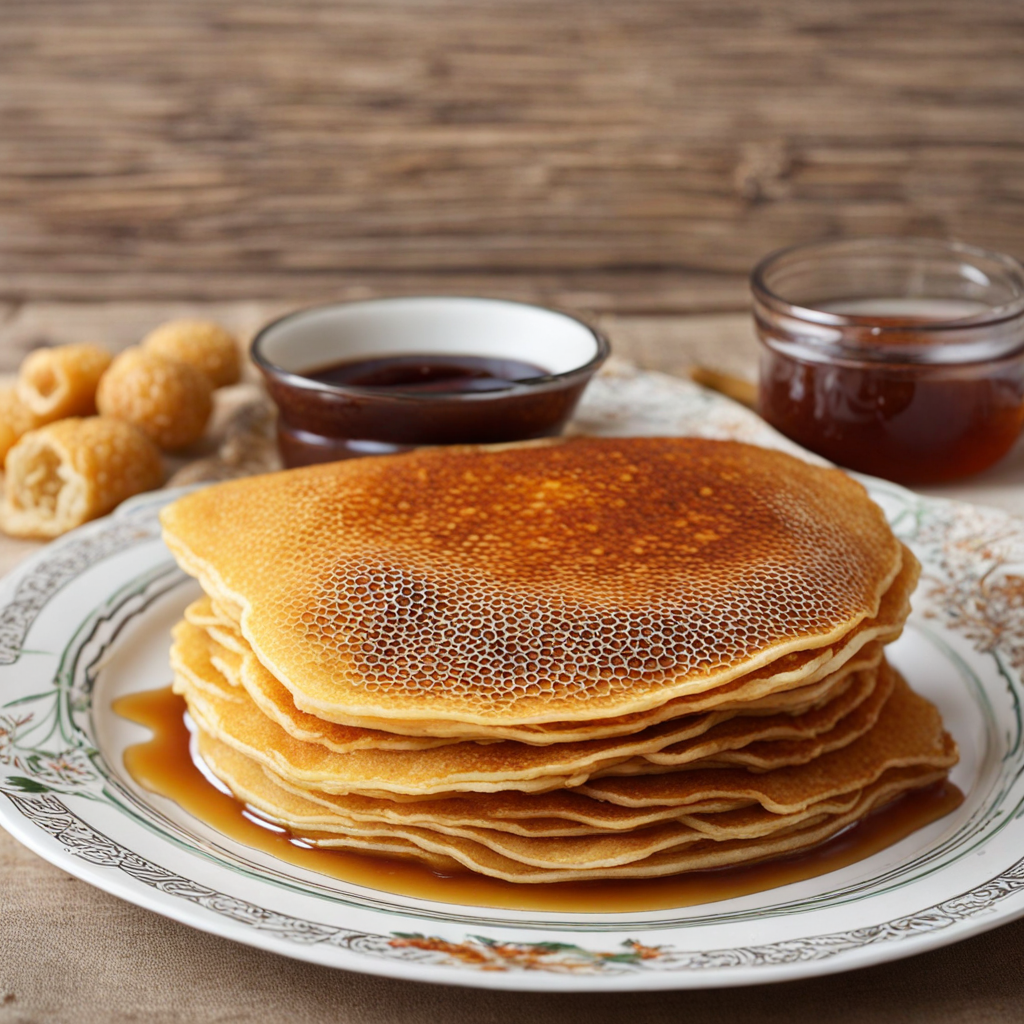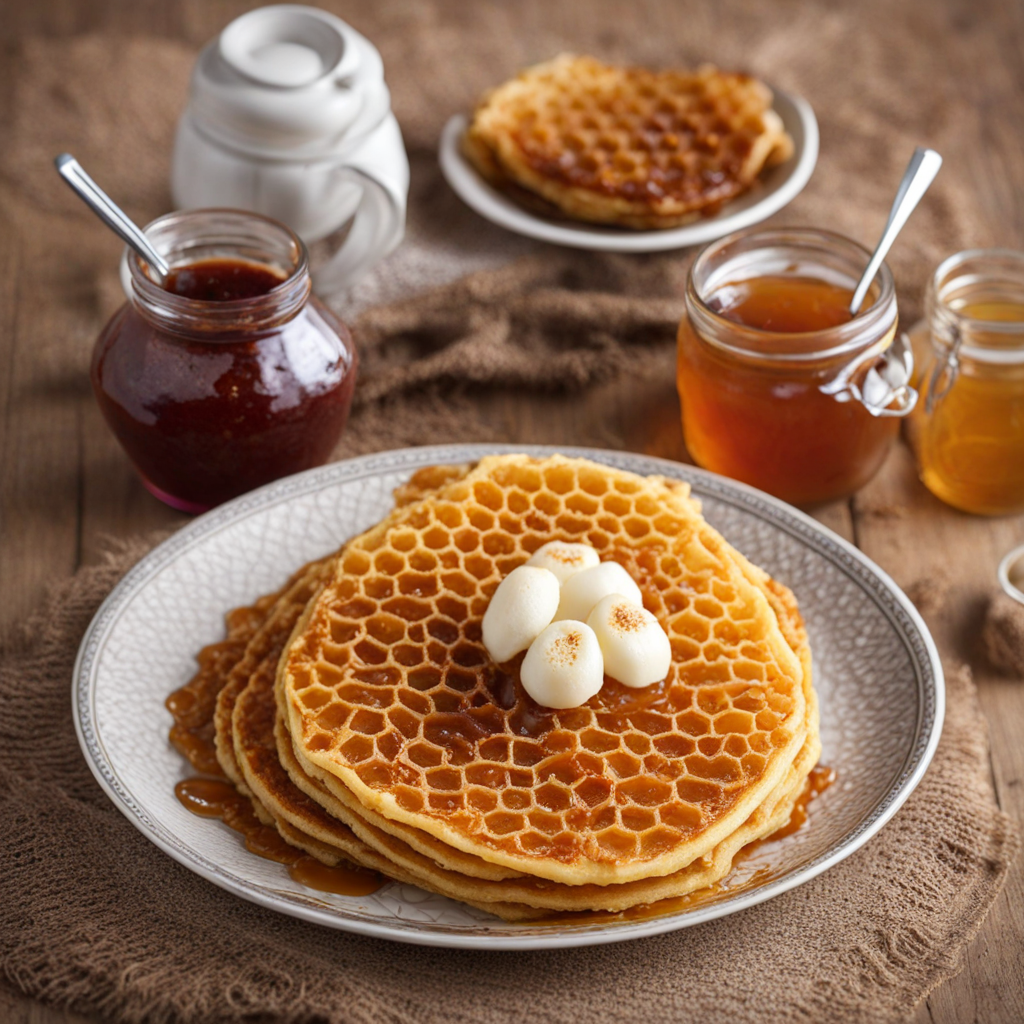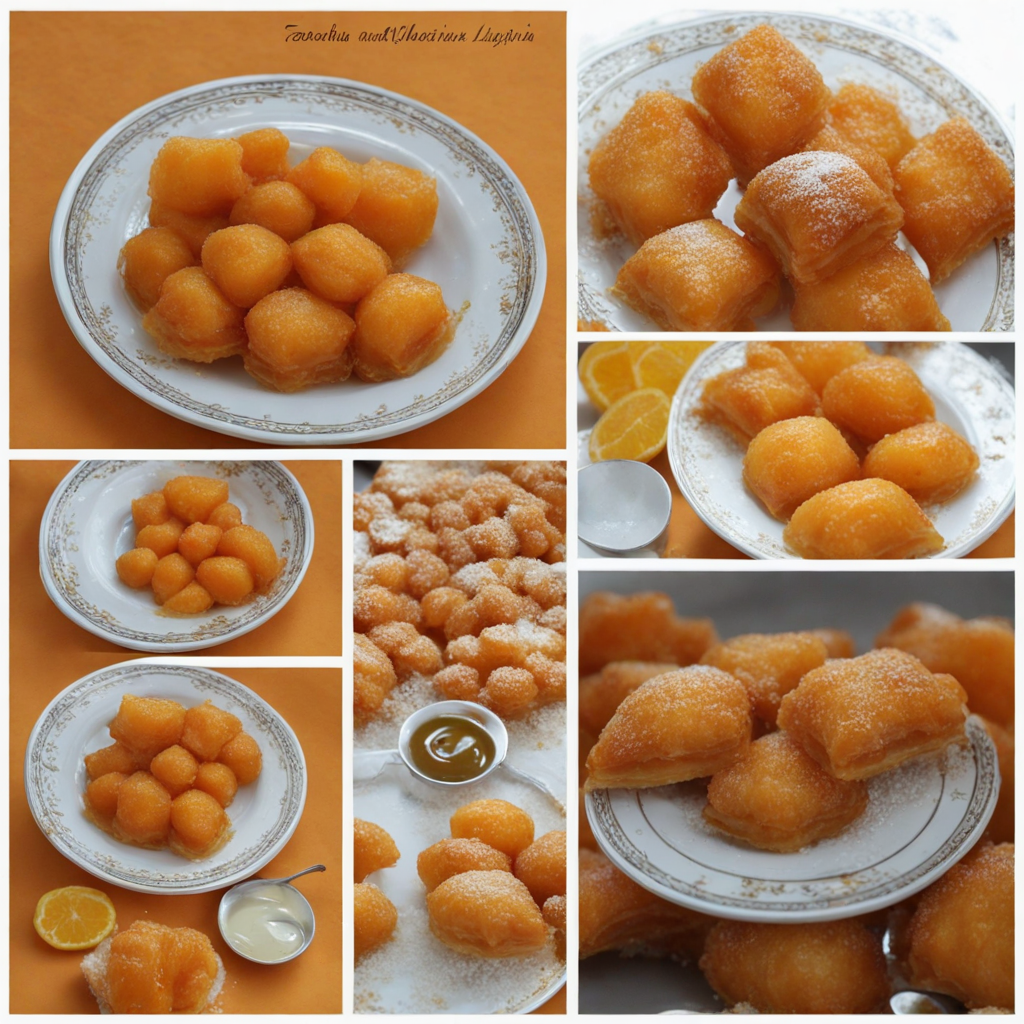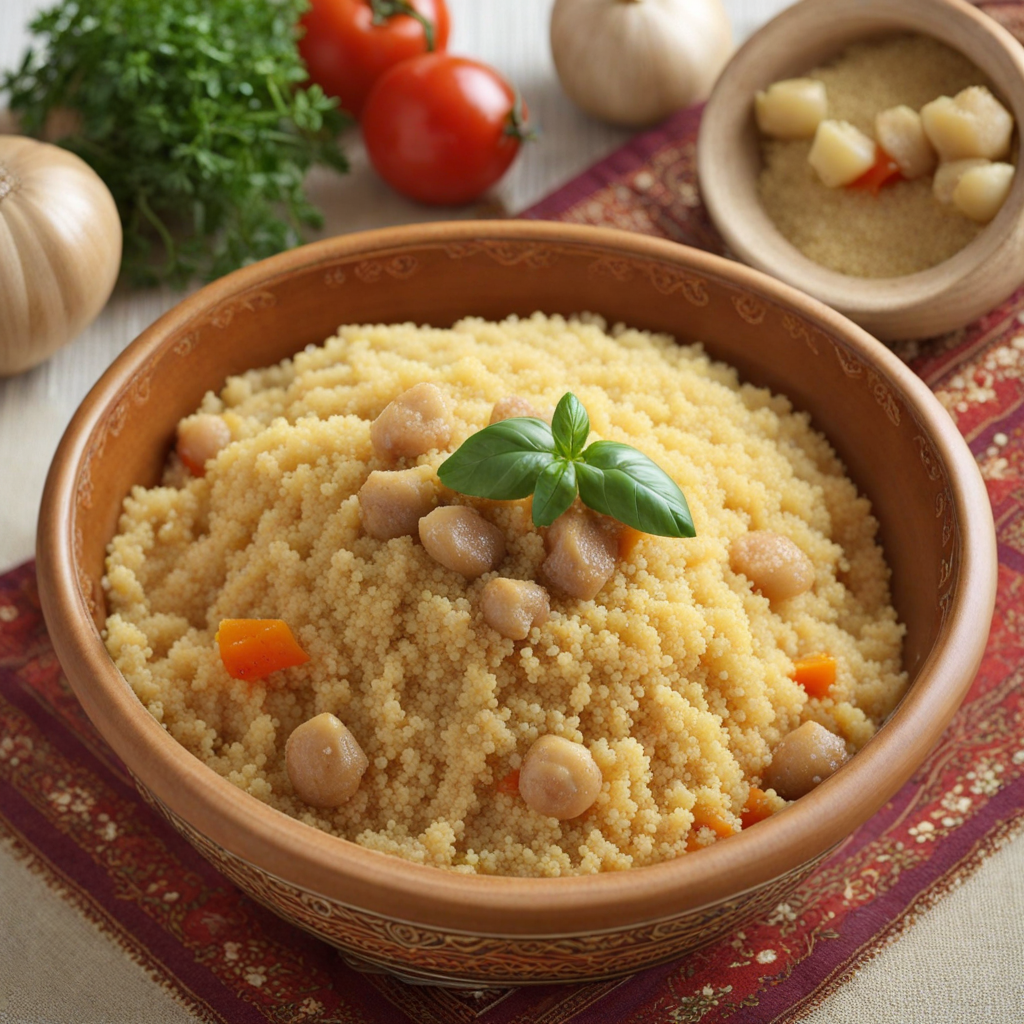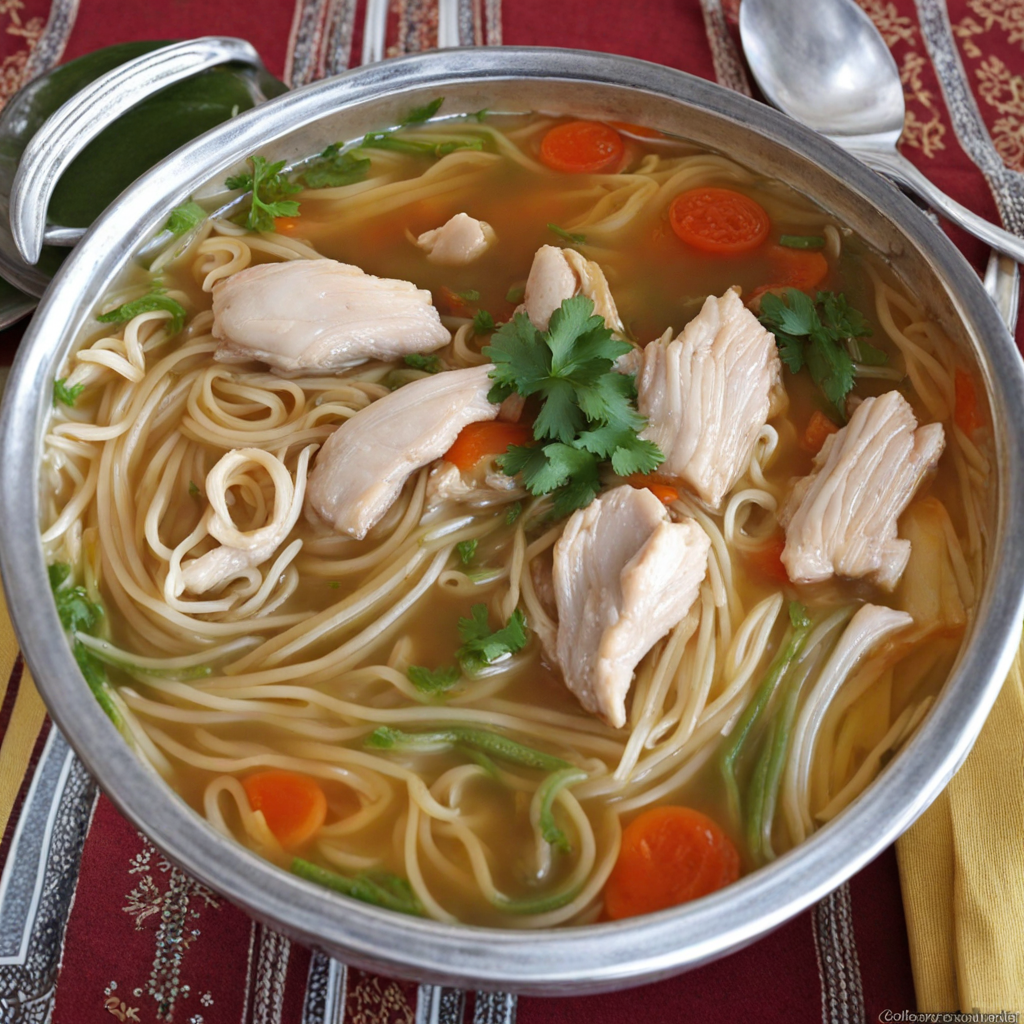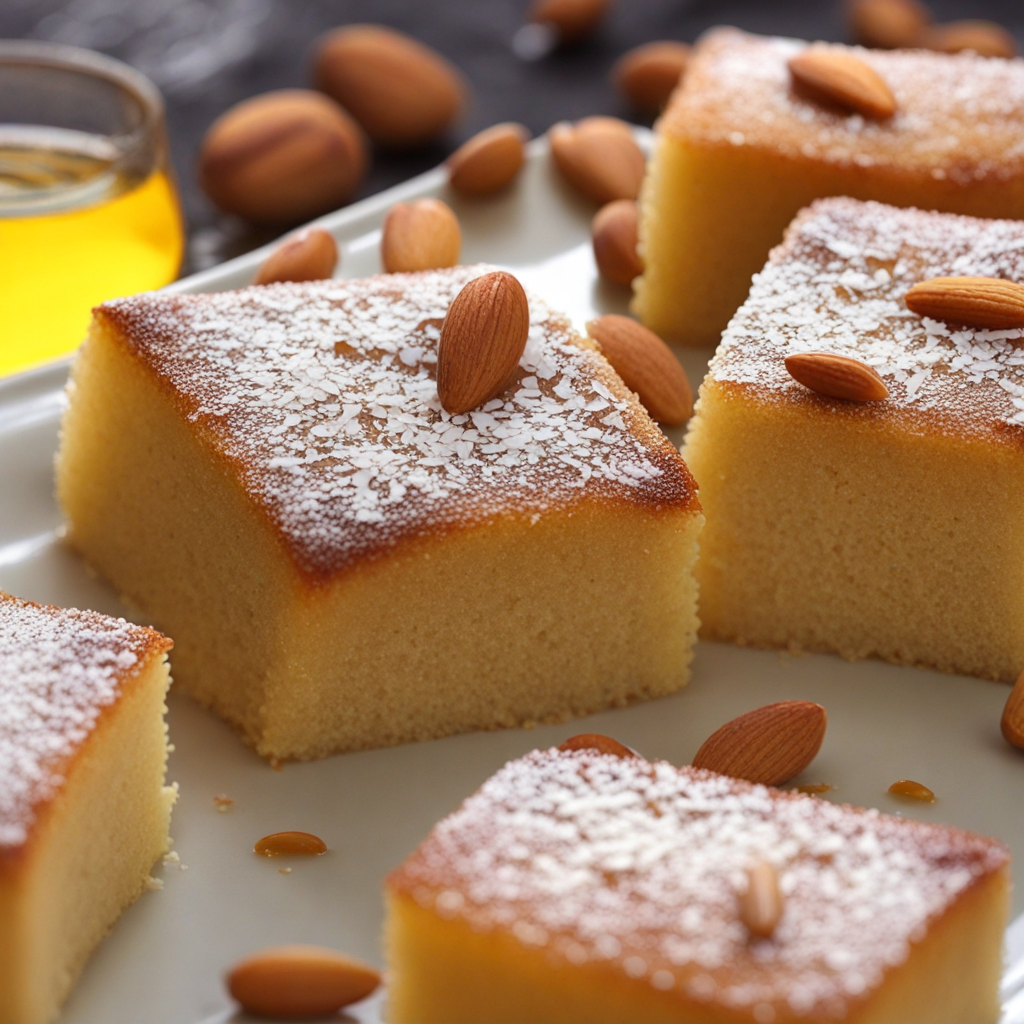Baghrir
Baghrir, often referred to as Moroccan pancakes, are a delightful culinary treasure from Algeria that capture the essence of North African flavors. These spongy, yeast-leavened pancakes are made primarily from semolina flour, water, and yeast, resulting in a unique texture that is both light and airy. The batter is allowed to ferment, which contributes to its characteristic holes on the surface when cooked. These holes not only serve as a visual signature but also play a crucial role in soaking up delicious toppings and syrups, making every bite a flavorful experience. The taste of Baghrir is subtly nutty, thanks to the semolina, and it carries a hint of sweetness, which pairs beautifully with various accompaniments. Traditionally, they are served warm, drizzled with honey or syrup, and sometimes accompanied by a dollop of butter. The combination of these toppings creates a rich, aromatic experience that enhances the pancake's natural flavor profile. In addition to sweet variations, Baghrir can also be enjoyed with savory toppings like cheese or spiced meats, showcasing their versatility as a dish that can satisfy any palate. What makes Baghrir truly special is not only its unique taste and texture but also the cultural significance it holds in Algerian cuisine. Often enjoyed during breakfast or as a snack, these pancakes bring people together, making them a beloved dish at family gatherings and celebrations. Each bite of Baghrir is a journey into the heart of Algerian culinary traditions, where the warmth of the kitchen and the joy of sharing food create lasting memories. Discovering Baghrir is an invitation to savor the rich tapestry of flavors that North Africa has to offer.
How It Became This Dish
The History of بغرير: Algeria's Beloved Pancake #### Origins: A Culinary Heritage بغرير, also known as "Algerian pancakes," is a traditional dish that holds a cherished place in the culinary landscape of Algeria. This spongy, yeast-leavened pancake made from semolina and flour has its roots deep within the Berber culture, which has thrived in North Africa for millennia. The Berbers, indigenous people of Algeria and other parts of North Africa, have long celebrated food as an integral part of their identity and culture. The origins of بغرير can be traced back to the ancient Berber tribes, who utilized locally grown grains, particularly barley and durum wheat, to create their staple foods. Over time, as trade routes flourished and interactions with various cultures increased, the recipe for بغرير evolved, incorporating elements from Arab, Ottoman, and even French influences. This adaptability is a testament to the dish's resilience and its ability to reflect the diverse history of Algeria itself. #### Cultural Significance In Algeria, بغرير is more than just a food item; it is a symbol of community, hospitality, and family gatherings. Traditionally served during festive occasions such as weddings, religious holidays like Eid, and family celebrations, these pancakes are often enjoyed with a drizzle of honey or a spread of butter, enhancing their flavor and making them a beloved treat among all ages. The preparation of بغرير is often a communal effort, bringing families together in the kitchen. This practice fosters a sense of unity and shared heritage among participants, as they pass down techniques and stories from one generation to the next. In many households, the making of بغرير is accompanied by songs and laughter, turning the cooking process into a lively event that strengthens family bonds. Moreover, بغرير has found its place in everyday life as well. It is commonly eaten for breakfast or as a snack, often paired with tea or coffee. Its versatility allows it to be enjoyed in various forms—whether plain, sweetened, or savory—making it a staple in both urban and rural settings across Algeria. #### Development Over Time The evolution of بغرير reflects the broader socio-economic and cultural changes in Algeria. During the French colonization in the 19th and early 20th centuries, traditional foods faced challenges as new culinary influences emerged. However, the resilience of Algerian culinary traditions, including the love for بغرير, ensured its survival. In the 20th century, as Algeria fought for independence and subsequently established its national identity, there was a revival of interest in traditional foods, including بغرير. This resurgence was not only a way to reclaim cultural heritage but also a means of fostering national unity. The dish became emblematic of Algerian pride, often featured in national celebrations and cultural festivals. With globalization in the late 20th and early 21st centuries, the exposure of Algerian cuisine to international audiences has increased. As the diaspora community grew, so did the demand for traditional dishes like بغرير, leading to its introduction in restaurants and cafes outside Algeria. Chefs began to experiment with the classic recipes, creating modern interpretations while still honoring the dish's roots. Today, بغرير is celebrated not just within Algeria but across North Africa and beyond. Food enthusiasts and chefs around the world have embraced the dish, integrating it into diverse culinary practices. Its unique texture and flavor profile have found a place on menus in international restaurants, showcasing the rich gastronomic heritage of Algeria to a wider audience. #### The Making of بغرير: A Culinary Art The process of making بغرير is an art form that embodies the essence of traditional Algerian cooking. The primary ingredients—semolina, flour, yeast, and water—are relatively simple, yet the technique involved is what transforms them into the light, airy pancakes that characterize بغرير. To prepare the batter, semolina is combined with water and a small amount of yeast, allowing it to ferment for a period. This fermentation process is crucial as it develops flavor and creates the characteristic bubbles that make بغرير distinct. After resting, the batter is poured onto a hot, lightly greased skillet, where it cooks until the surface is dotted with tiny holes—signifying that it is ready to be flipped or served as is. Traditionally, بغرير is cooked on a flat surface known as a "tajine," which is a type of griddle that allows for even cooking. The pancakes are typically served warm, often accompanied by honey, butter, or a savory topping, making them suitable for various palates. #### Modern Adaptations and Global Reach In recent years, the culinary scene has witnessed a revival of interest in traditional foods, leading to innovative adaptations of بغرير. Modern chefs are experimenting with different flours, including gluten-free options, and incorporating various flavors and fillings, such as herbs, spices, or even chocolate. Social media and food blogs have further propelled the popularity of بغرير, allowing home cooks and food enthusiasts to share their experiences and variations of the dish. This digital platform has created a global community interested in Algerian cuisine, inspiring many to try their hand at making بغرير and sharing it with friends and family. #### Conclusion: A Testament to Resilience بغرير is more than just a pancake; it is a culinary testament to the resilience of Algerian culture and its ability to adapt while maintaining its core identity. From its ancient Berber roots to its modern interpretations, بغرير continues to be a beloved dish that brings people together, celebrating the flavors and traditions of Algeria. As the world becomes increasingly interconnected, the appreciation for traditional foods like بغرير serves as a reminder of the importance of cultural heritage. Each bite of this delightful pancake is a taste of history, a moment of connection to the past, and a celebration of the vibrant tapestry of Algerian life. Whether served at a festive gathering or enjoyed as a simple breakfast, بغرير remains a symbol of hospitality, community, and the enduring legacy of Algerian cuisine.
You may like
Discover local flavors from Algeria


